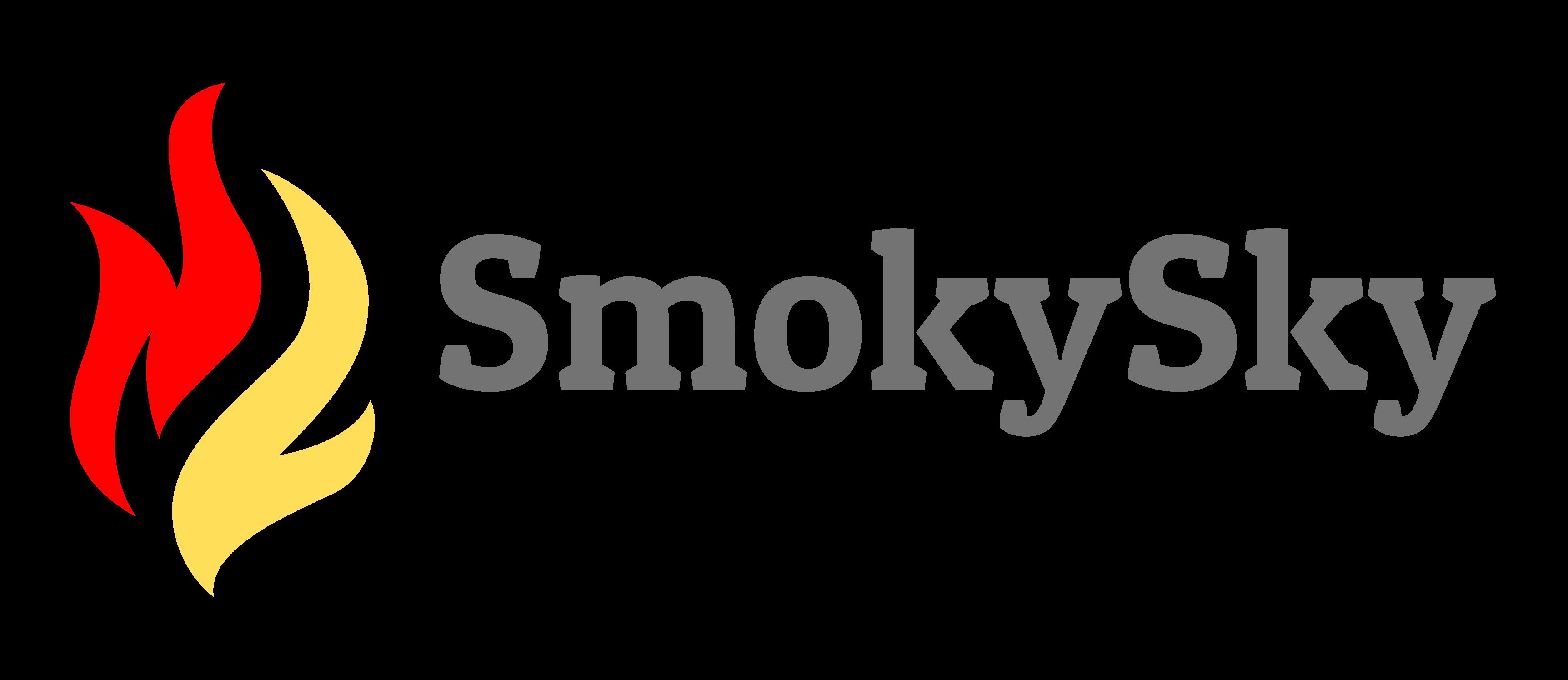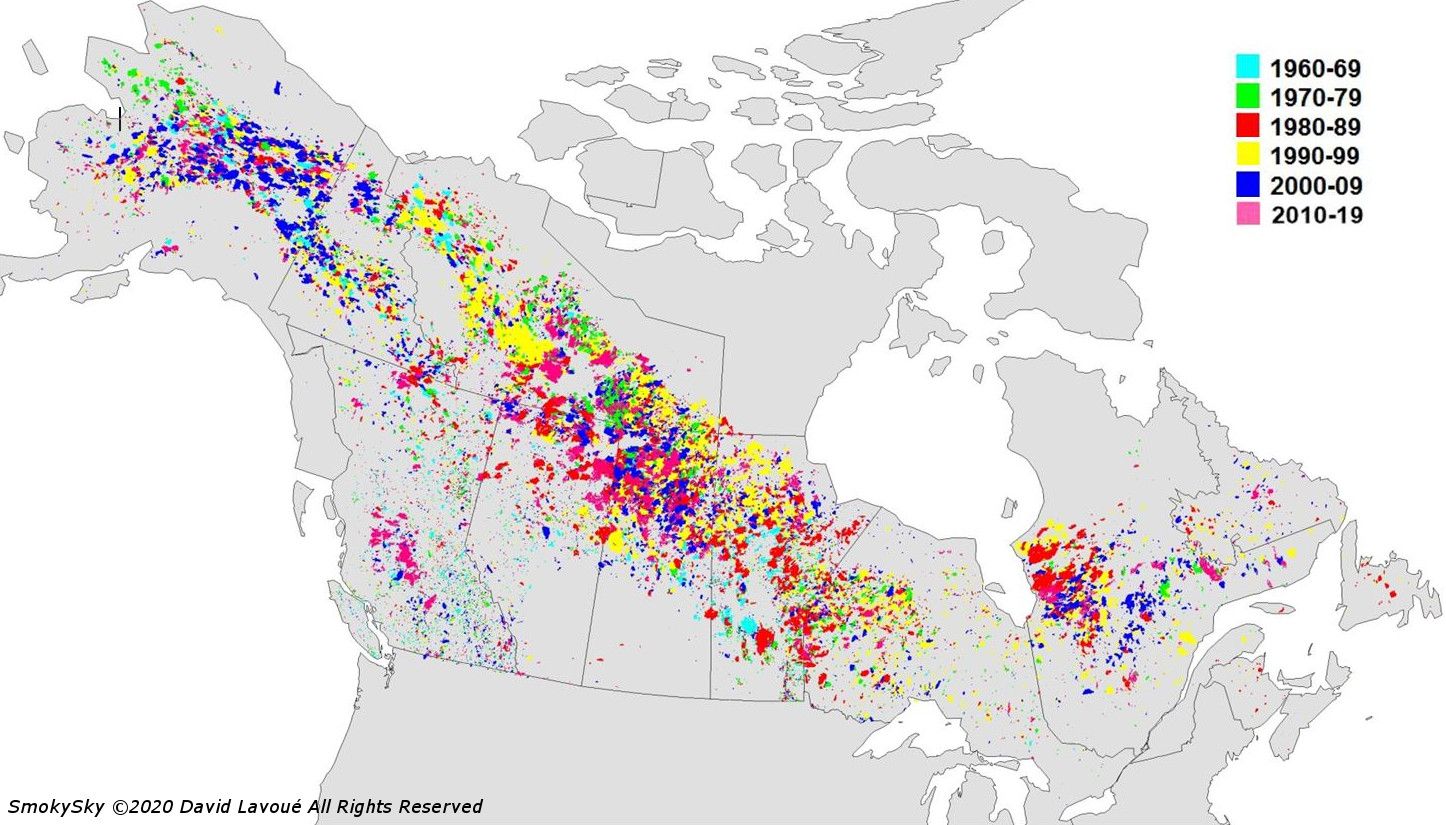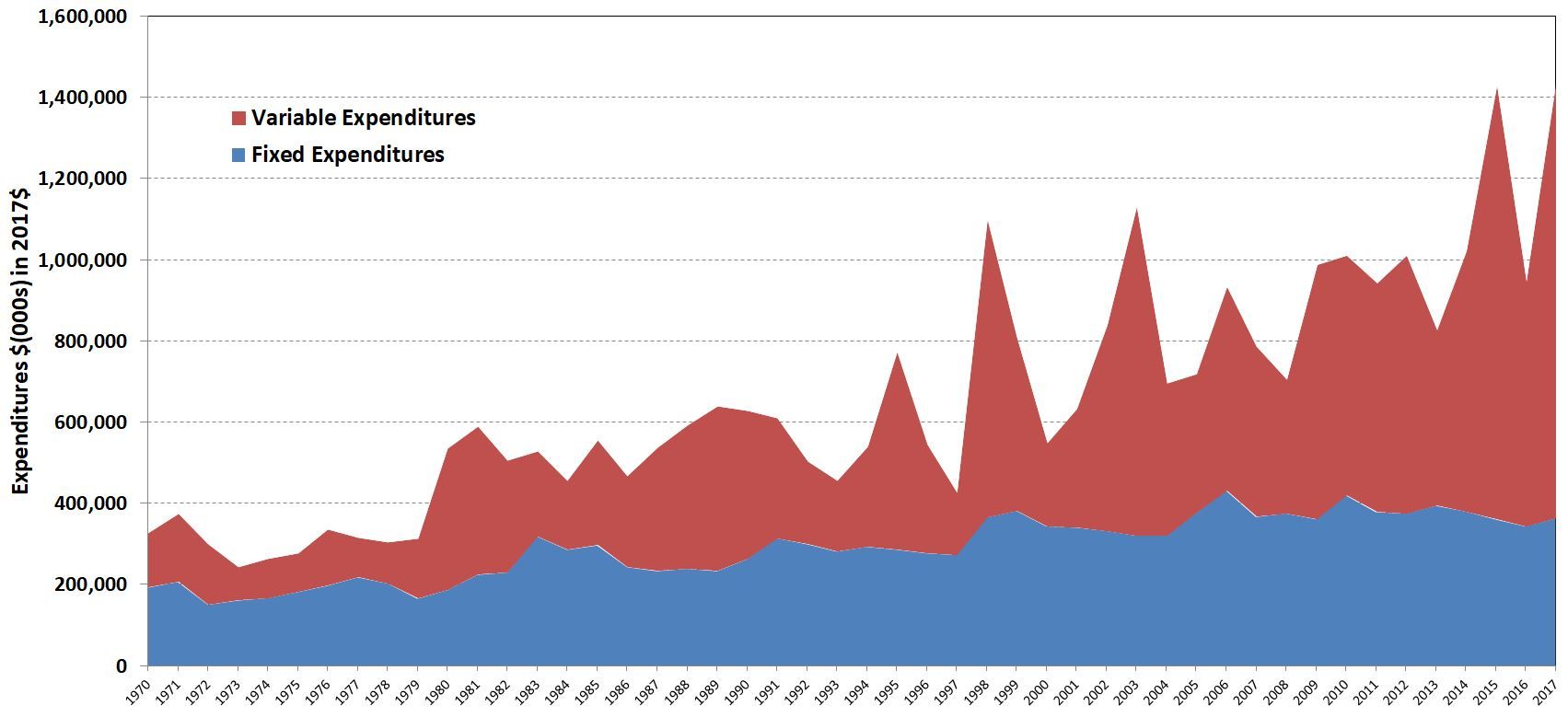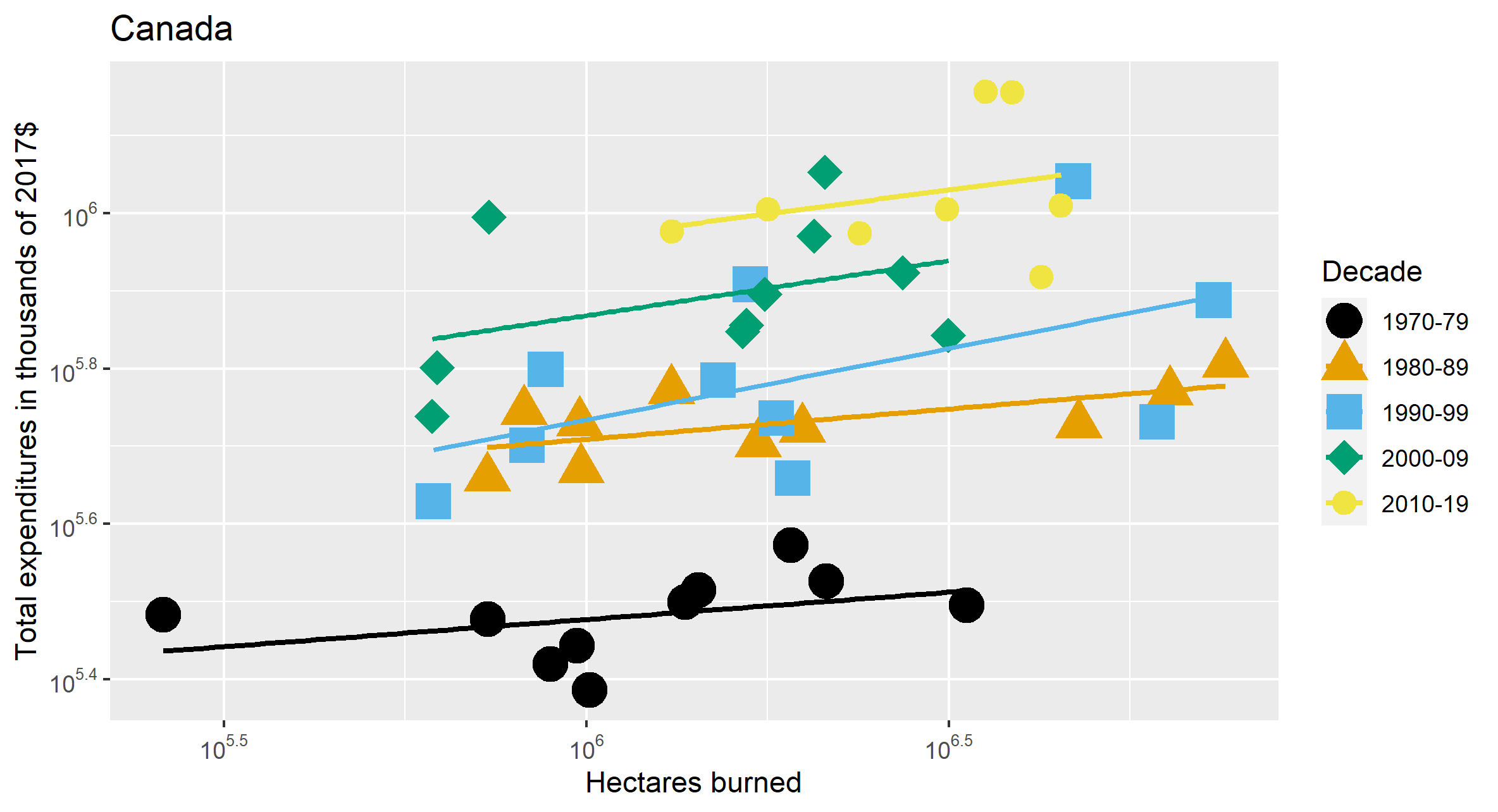Alaska/Canada
Wildfires play an essential role in Canadian & Alaskan forest ecosystems’ life. Fire occurrence depends on weather conditions, fuel types, topography and human influence. Large wildland fires (>200 hectares) regularly affect the northern boreal forest. Large fires represent only ~3% of all fires but account for more than 95% of the total area burned. Historical area burned datasets for both regions show a great year-to-year variability. The Canadian fire season typically starts in April and ends in October. In Alaska, the season is mostly in the summer.
|
A collaborative effort by multiple fire management agencies in Canada and Alaska has resulted in the creation of a comprehensive historical dataset of fire occurrences across the boreal zone. The map at right shows the actual areas burned by boreal wildfires by decade for the past 60 years. The interactive bar chart below the map depicts the evolution of the area burned in million hectares in Alaska (blue) and Canada (red) from 1959 through 2019. In 60 years the decadal average increased from nearly 1 to over 3 million hectares of forest burned per year. |
|||||||||||||||||||||||||||||
|
Areas Burned: Decadal Averages (million hectares/year)
|
|||||||||||||||||||||||||||||
|
The Mann-Kendall statistical test indicates an upward trend in annual boreal area burned at the 99% significance level. (AK: Alaska, CAN: Canada). |
|
|
References
Alaska Interagency Coordination Center, Alaska's fire statistics 1998-2019.
Canadian Interagency Forest Fire Centre, Canadian fires 2018-2019.
CWFIS Datamart, Canadian fires 1959-2017.
Kasischke E., Alaska's fire statistics 1959-1997 (pers.comm.).
Krezek-Hanes C.C., Ahern F., Cantin A., and Flannigan M.D. (2011), Trends in large fires in Canada, 1959-2007, Canadian Biodiversity: Ecosystem Status and Trends 2010, Technical Thermal Report No. 6, Canadian Councils of Resource Ministers, Ottawa, ON, 48 p.
Pankratz A., Lavoué D., and Davis A. (2014), Wildfire Smoke From Start to Finish, The Canadian Smoke Newsletter, 18-39.
Stocks B.J., Mason J.A., Todd J.B., Bosch E.M., Wotton B.M., Amiro B.D., Flannigan M.D., Hirsch K.G., Logan K.A., Martell D.L., Skinner W.R. (2003), Large forest fires in Canada, 1959-1997, Journal of Geophysical Research, 108: 8149-8161.
Last Modified on 4 February 2021
CO: Carbon Monoxide; GHGs: Greenhouse Gases (CO2: Carbon Dioxide, CH4: Methane, N2O: Nitrous Oxide); NH3: Ammoniac; NOx: Nitrogen Oxides; PM2.5: Particulate Matter > 2.5 μm
References
Amiro B.D., Todd J.B., Wotton B.M., Logan K.A., Flannigan M.D., Stocks B.J., Mason J.A., Martell D.L. and Hirsch K.G. (2001), Direct carbon emissions from Canadian forest fires, 1959-1999, Canadian Journal of Forest Research, 31(3): 512-525.
Lavoué D., Gong S.L. and Stocks B.J. (2007), Modelling emissions from Canadian wildfires: a case study of the 2002 Quebec fires, International Journal of Wildland Fire, 16: 649-663.
Lavoué D. and Stocks B.J. (2011), Emissions of air pollutants by Canadian wildfires from 2000 to 2004, International Journal of Wildland Fire, 20:17-34.
Last Modified on 4 February 2021
References
Hope E.S., McKenney D.W., Pedlar J.H., Stocks B.J., and Gauthier S. (2016), Wildfire Suppression Costs for Canada under a Changing Climate, PLOS ONE 11(8): e0157425. https://doi.org/10.1371/journal.pone.0157425
Natural Resources Canada (2020), https://www.nrcan.gc.ca/climate-change/impacts-adaptations/climate-change-impacts-forests/forest-change-indicators/cost-fire-protection/17783.
Stocks B.J. (2013), Evaluating past, current and future wildland fire load trends in Canada, B.J. Stocks Wildfire Investigations Ltd., 51 p.
Stocks B.J. and Martell D.L. (2016), Forest fire management expenditures in Canada: 1970-2013, The Forestry Chronicle, 92(3): 298-306.



